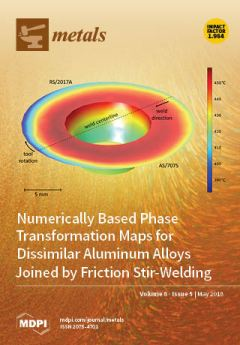The hydrogen evolution reaction (HER) property of molybdenum disulfide (MoS
2) is undesirable because of the insufficient active edge sites and the poor conductivity. To enhance HER performance of MoS
2, nickel phosphide (Ni
2P) was combined with this catalyst
[...] Read more.
The hydrogen evolution reaction (HER) property of molybdenum disulfide (MoS
2) is undesirable because of the insufficient active edge sites and the poor conductivity. To enhance HER performance of MoS
2, nickel phosphide (Ni
2P) was combined with this catalyst and three MoS
2/Ni
2P hybrids (38 wt % Ni
2P addition for MoS
2/Ni
2P-38, 50 wt % Ni
2P addition for MoS
2/Ni
2P-50, and 58 wt % Ni
2P addition for MoS
2/Ni
2P-58) were fabricated via a hydrothermal synthesis process. Morphologies, crystallinities, chemical components, specific surface areas, and HER properties of the fabricated MoS
2/Ni
2P samples in an alkaline electrolyte were characterized and tested. In addition, the insight into the HER properties of as-prepared catalysts were revealed by the density functional theory (DFT) calculation. Additionally, the stabilities of pure MoS
2, Ni
2P, and MoS
2/Ni
2P-50 samples were evaluated. The results show that the addition of Ni
2P can enhance the HER property of the MoS
2 catalyst. Although HER properties of the above-mentioned three MoS
2/Ni
2P hybrids are inferior to that of pure Ni
2P, they are much higher than that of MoS
2. Among as-prepared three hybrids, MoS
2/Ni
2P-50 exhibits the best HER performance, which may be due to its uniform morphology, large specific surface area, and excellent stability. The MoS
2/Ni
2P-50 hybrid shows a high cathodic current density (70 mA/cm
2 at −0.48 V), small Tafel slope (~58 mV/decade), and a low charge transfer resistance (0.83 kΩ·cm
2).
Full article





